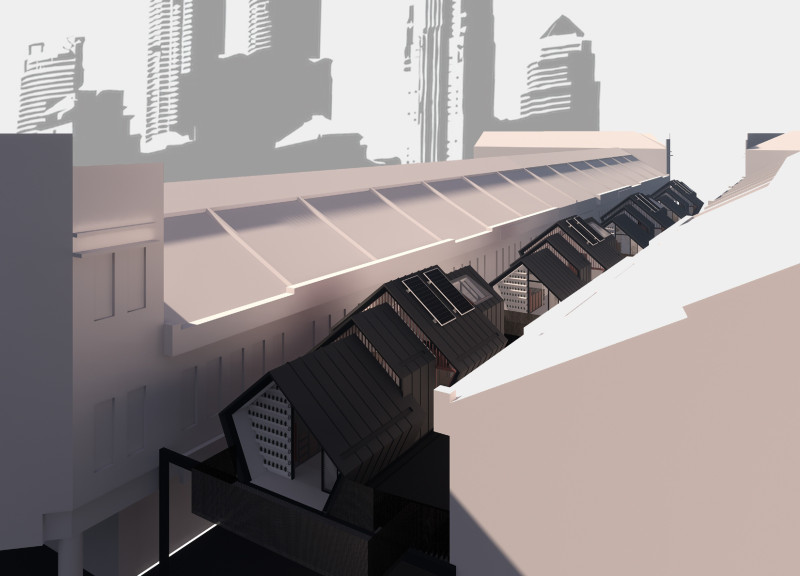5 key facts about this project
Kampung Alley is an initiative aimed at revitalizing the urban space of Kuala Lumpur, Malaysia. Located in a city characterized by rapid development, the project seeks to turn neglected back alleys into lively social areas. Its primary goal is to address issues such as high living costs and lower quality of life, particularly for younger residents. The design emphasizes affordability and community engagement while celebrating the rich cultural identity present in the area.
Design Concept
At the heart of the design is the idea of increasing livability through the creative use of underutilized spaces. Kampung Alley focuses on restoring the local community's sense of belonging by creating affordable micro homes for the younger population. This approach not only encourages social interaction but also strengthens the connection residents have to their surroundings.
Spatial Elements
Key features of the design include aluminium frame louvers, which enhance ventilation and provide shade while allowing natural light to enter the interior spaces. Skylights are strategically placed throughout the site to maximize daylight, creating bright and welcoming environments that invite social gatherings. The inclusion of a metal deck roof ensures durability, making it suitable for a variety of community events.
Sustainability Features
The project demonstrates a commitment to sustainability through the introduction of hydrophonic systems. These systems allow residents to grow food in an urban setting, promoting self-sufficiency and improving access to fresh produce. By incorporating greenery into the urban context, it enhances the overall ecological balance and contributes to a healthier living environment.
Cultural Integration
The design pays careful attention to the integration of cultural elements with modern living. By establishing marketplaces within the alleyways, Kampung Alley supports local businesses and encourages the continuation of traditional practices that are crucial to Kuala Lumpur's identity. This blending of cultural heritage with contemporary needs fosters a vibrant community atmosphere.
The thoughtful arrangement of functional and social spaces results in an environment where residents can connect, thrive, and engage with their cultural roots. This approach enriches the urban experience in Kuala Lumpur, making it more inclusive and reflective of the community's diverse history.






















































